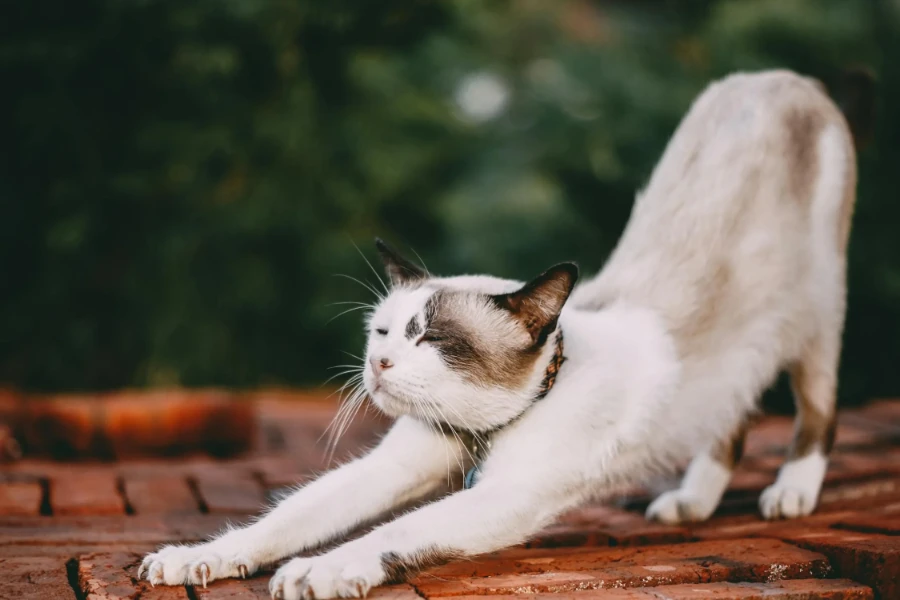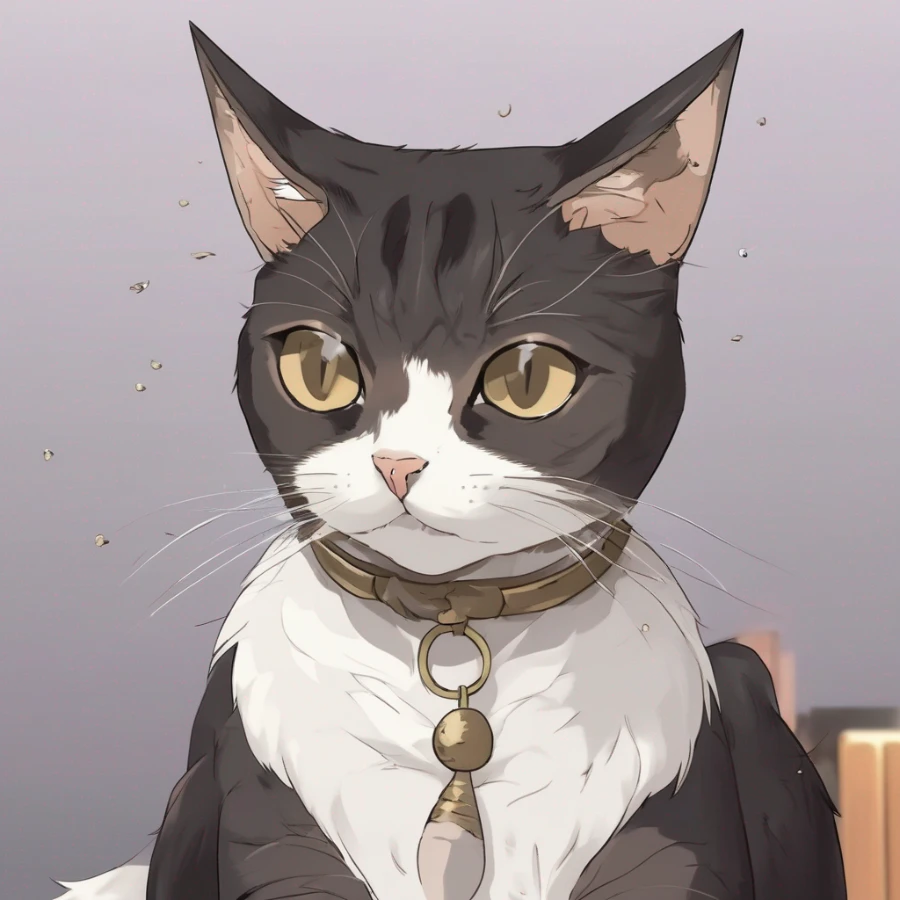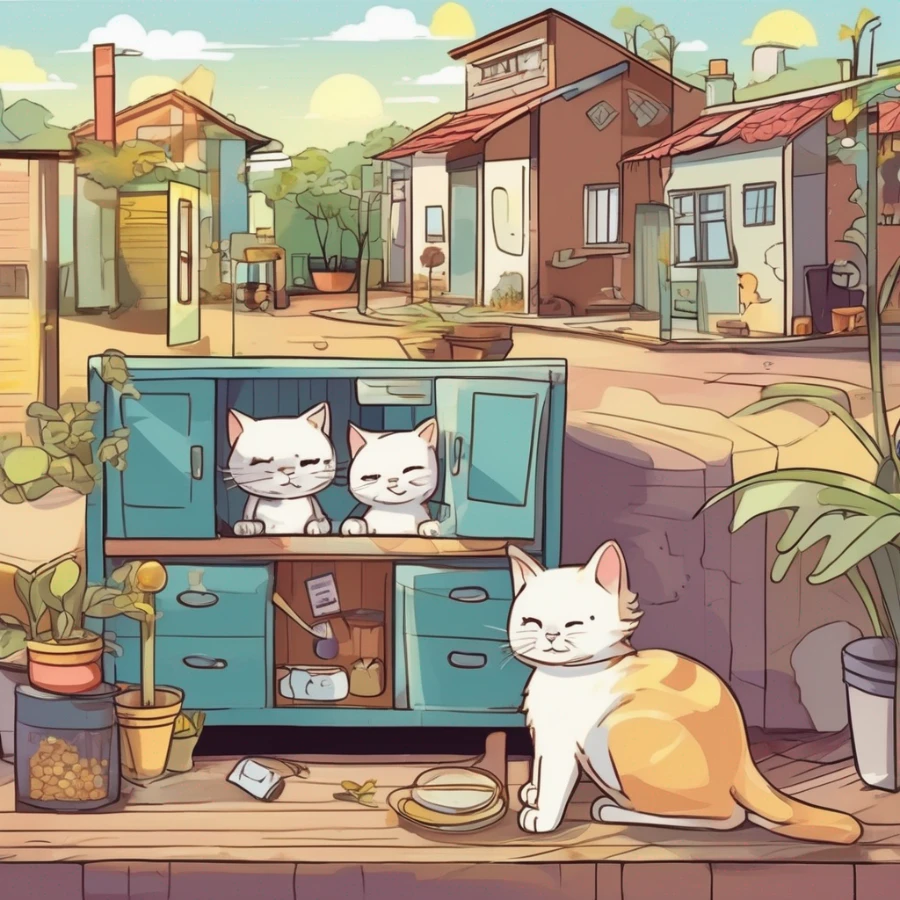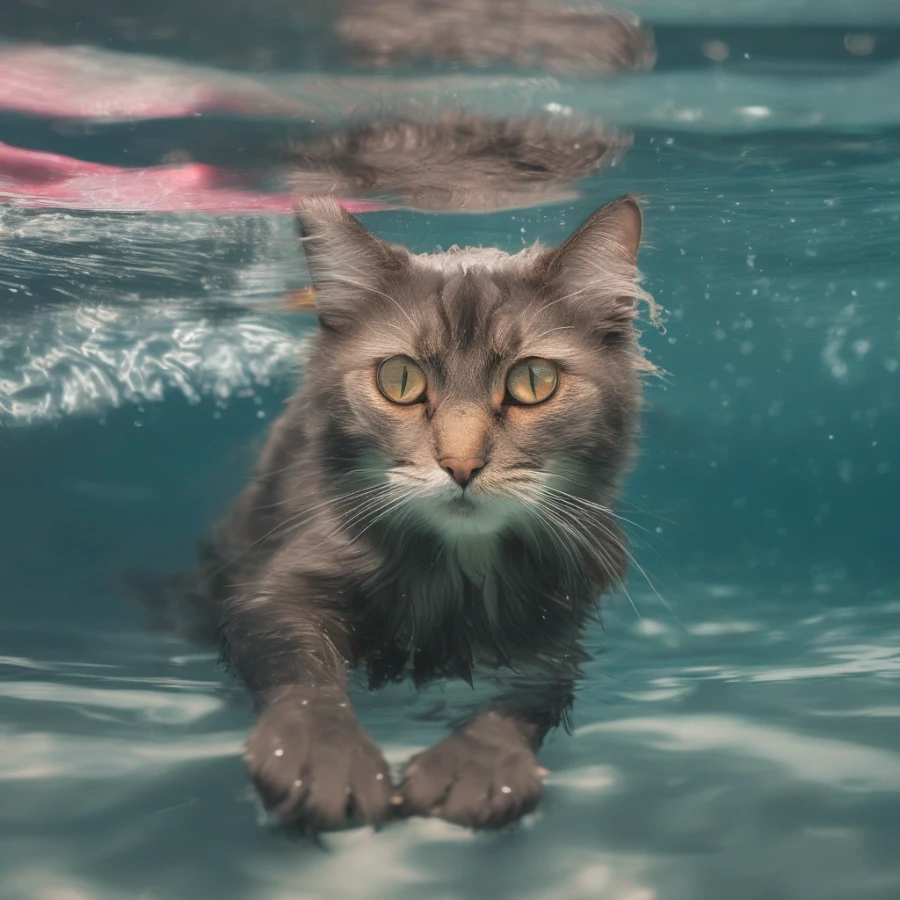Why Do Cats Make Biscuits ? Top 10 Reasons Explained

Published by: Tatsiana Korshik
Time to Read: 10 Min

Hey there, feline enthusiasts! Ever caught your cat doing that adorable kneading motion with their paws, like they're baking invisible bread? Well, get ready to dive into the enchanting world of "Why Do Cats Make Biscuits? Top 10 Reasons Explained." It's not just a cute quirk; those rhythmic paw presses reveal a lot about your furball's state of mind. Let's break down the reasons behind this unique cat behavior and uncover the secret language your cat is kneading into your heart.
Observing your cat during kneading and noting the context can provide valuable insights into their behavior. This observation may help you understand what your furry friend is seeking or communicating, whether it's a request for attention or a form of feline expression.
Ever caught your furball in the adorable act of making biscuits? Those rhythmic paw presses on a soft surface – it's not just a cute quirk; it's a fascinating glimpse into your cat's world. Let's dig into the reasons behind this charming behavior and unravel the secrets behind why cats make biscuits.
1. Nostalgia from Kittenhood:
When your cat makes biscuits, they might be revisiting the nostalgia of kittenhood. This behavior is reminiscent of kneading during nursing, a comforting ritual that lingers into adulthood.
2. Marking Their Territory:
Believe it or not, those biscuits are more than just a doughy delight. Cats have scent glands in their paws, and when they knead, they're marking their territory with their unique scent. It's like a signature move, claiming their space.
3. Expressing Happiness:
Cats aren't subtle about their happiness. Making biscuits is a sign of contentment and joy. Your furry friend is essentially saying, "Life's good, and I'm feeling great!"
4. Display of Affection:
Consider those biscuits a feline love language. When cats knead, especially on you, it's a gesture of deep affection. They associate you with comfort and warmth, and those rhythmic presses are their way of showing love.
5. Creating a Cozy Spot:
In the wild, cats knead before settling down. It's like they're fluffing up their sleeping area for optimal coziness. So, when your cat makes biscuits on your bed or sofa, they're transforming it into their purr-fect nap spot.
6. Relieving Stress:
Life can be stressful for our feline friends too. Kneading helps cats relax and cope with stress. It's their version of a stress ball, and those rhythmic motions provide a soothing effect.
7. Establishing Trust:
When your cat makes biscuits on you, take it as a badge of honor. It's a sign that they trust you implicitly. Your lap becomes their safe haven, and the kneading reinforces the bond between you two.
8. Seeking Attention:
Feel those gentle presses on your lap? Your cat might be vying for your attention. Making biscuits is a subtle way of saying, "Hey, pay some more attention to me!"
9. Comforting Themselves:
Cats are creatures of comfort, and kneading is like a therapeutic self-soothing session. When they make biscuits, it's a self-comfort mechanism, providing a sense of security and tranquility.
10. It's Simply Instinctual:
Last but not least, making biscuits is in a cat's DNA. It's an instinctual behavior that serves multiple purposes, from ensuring a comfy sleep spot to expressing their emotional state.
So, the next time you witness your cat making biscuits, remember it's more than just a cute display – it's a multifaceted expression of their emotions and instincts.
Kneading is a natural and instinctive behavior in cats, and in most cases, it's harmless and even endearing. However, there are instances when it can become problematic, especially if the kneading is excessive or causes discomfort. While there's no need to completely stop your cat from kneading, there are steps you can take to ensure a positive experience for both you and your feline friend.
Excessive Kneading:
If your cat's kneading becomes overly enthusiastic or happens at inconvenient times, such as on sensitive body parts, it might be a good idea to gently redirect their behavior. Provide a soft and acceptable alternative, like a plush blanket or a designated pet bed.
Painful Kneading:
Cats have retractable claws, but occasionally, their kneading may involve extended claws, leading to discomfort. If your cat's kneading becomes painful, consider using a soft towel or blanket as a barrier to prevent direct contact with their claws. Alternatively, gently trim your cat's claws to reduce the potential for discomfort.
Gradual Distraction:
Introduce engaging toys or activities to gradually distract your cat from excessive kneading. Interactive toys can provide mental and physical stimulation, redirecting their energy and focus in a positive manner.
Remember, understanding the context of your cat's kneading and addressing any issues with patience and positive reinforcement can contribute to a harmonious relationship between you and your furry companion.
Moreover, if your cat kneads on you, it's a demonstration of their love and trust in your presence. While kneading is generally harmless and an adorable aspect of feline behavior, it's essential to be attuned to your cat's needs and emotions.
In the end, appreciating and understanding your cat's kneading rituals adds a layer of joy to your relationship, creating a purr-fectly harmonious bond between you and your feline companion.
Cats often purr as a means of self-soothing and expressing contentment. Kneading, on the other hand, is a natural behavior developed during kittenhood, associated with nursing and comfort. Together, purring and kneading create a harmonious and contented feline experience.
When cats knead their owners, it's a display of affection and trust. The rhythmic motion stems from kittenhood when they kneaded their mother's belly to stimulate milk flow. Kneading on their human signifies a deep bond and a sense of security.
Kneading blankets is an instinctual behavior that harks back to kittenhood. Cats knead soft surfaces, like blankets, to create a cozy and comfortable spot for themselves. It's a comforting ritual that often signifies contentment.
What Is Cat Kneading?
Cat kneading, also known as making biscuits, is a charming feline behavior where cats rhythmically push their paws down on a soft surface, often alternating each one. It resembles the motion of kneading dough before baking. While not all cats knead, some use their claws during this process, while others keep them retracted. Cats may choose to knead on various surfaces, including their human companions, blankets, or carpets, depending on their preferences.Observing your cat during kneading and noting the context can provide valuable insights into their behavior. This observation may help you understand what your furry friend is seeking or communicating, whether it's a request for attention or a form of feline expression.
10 Reasons Why Do Cats Make Biscuits

Ever caught your furball in the adorable act of making biscuits? Those rhythmic paw presses on a soft surface – it's not just a cute quirk; it's a fascinating glimpse into your cat's world. Let's dig into the reasons behind this charming behavior and unravel the secrets behind why cats make biscuits.
1. Nostalgia from Kittenhood:
When your cat makes biscuits, they might be revisiting the nostalgia of kittenhood. This behavior is reminiscent of kneading during nursing, a comforting ritual that lingers into adulthood.
2. Marking Their Territory:
Believe it or not, those biscuits are more than just a doughy delight. Cats have scent glands in their paws, and when they knead, they're marking their territory with their unique scent. It's like a signature move, claiming their space.
3. Expressing Happiness:
Cats aren't subtle about their happiness. Making biscuits is a sign of contentment and joy. Your furry friend is essentially saying, "Life's good, and I'm feeling great!"
4. Display of Affection:
Consider those biscuits a feline love language. When cats knead, especially on you, it's a gesture of deep affection. They associate you with comfort and warmth, and those rhythmic presses are their way of showing love.
5. Creating a Cozy Spot:
In the wild, cats knead before settling down. It's like they're fluffing up their sleeping area for optimal coziness. So, when your cat makes biscuits on your bed or sofa, they're transforming it into their purr-fect nap spot.
6. Relieving Stress:
Life can be stressful for our feline friends too. Kneading helps cats relax and cope with stress. It's their version of a stress ball, and those rhythmic motions provide a soothing effect.
7. Establishing Trust:
When your cat makes biscuits on you, take it as a badge of honor. It's a sign that they trust you implicitly. Your lap becomes their safe haven, and the kneading reinforces the bond between you two.
8. Seeking Attention:
Feel those gentle presses on your lap? Your cat might be vying for your attention. Making biscuits is a subtle way of saying, "Hey, pay some more attention to me!"
9. Comforting Themselves:
Cats are creatures of comfort, and kneading is like a therapeutic self-soothing session. When they make biscuits, it's a self-comfort mechanism, providing a sense of security and tranquility.
10. It's Simply Instinctual:
Last but not least, making biscuits is in a cat's DNA. It's an instinctual behavior that serves multiple purposes, from ensuring a comfy sleep spot to expressing their emotional state.
So, the next time you witness your cat making biscuits, remember it's more than just a cute display – it's a multifaceted expression of their emotions and instincts.
When Kneading Becomes an Issue: What To Do

Kneading is a natural and instinctive behavior in cats, and in most cases, it's harmless and even endearing. However, there are instances when it can become problematic, especially if the kneading is excessive or causes discomfort. While there's no need to completely stop your cat from kneading, there are steps you can take to ensure a positive experience for both you and your feline friend.
Excessive Kneading:
If your cat's kneading becomes overly enthusiastic or happens at inconvenient times, such as on sensitive body parts, it might be a good idea to gently redirect their behavior. Provide a soft and acceptable alternative, like a plush blanket or a designated pet bed.
Painful Kneading:
Cats have retractable claws, but occasionally, their kneading may involve extended claws, leading to discomfort. If your cat's kneading becomes painful, consider using a soft towel or blanket as a barrier to prevent direct contact with their claws. Alternatively, gently trim your cat's claws to reduce the potential for discomfort.
Gradual Distraction:
Introduce engaging toys or activities to gradually distract your cat from excessive kneading. Interactive toys can provide mental and physical stimulation, redirecting their energy and focus in a positive manner.
Remember, understanding the context of your cat's kneading and addressing any issues with patience and positive reinforcement can contribute to a harmonious relationship between you and your furry companion.
Conclusion:
In conclusion, kneading is an intrinsic behavior rooted in a cat's instinct, often developed during kittenhood. Traditionally recognized as a gesture of contentment and security, cats engage in this delightful practice known as "making biscuits." When your furry friend kneads, it's their way of expressing happiness and a sense of well-being.Moreover, if your cat kneads on you, it's a demonstration of their love and trust in your presence. While kneading is generally harmless and an adorable aspect of feline behavior, it's essential to be attuned to your cat's needs and emotions.
In the end, appreciating and understanding your cat's kneading rituals adds a layer of joy to your relationship, creating a purr-fectly harmonious bond between you and your feline companion.
FAQ: Cat Kneading
Why do cats purr and knead?
Cats often purr as a means of self-soothing and expressing contentment. Kneading, on the other hand, is a natural behavior developed during kittenhood, associated with nursing and comfort. Together, purring and kneading create a harmonious and contented feline experience.
Why do cats knead their owners?
When cats knead their owners, it's a display of affection and trust. The rhythmic motion stems from kittenhood when they kneaded their mother's belly to stimulate milk flow. Kneading on their human signifies a deep bond and a sense of security.
Why do cats knead blankets?
Kneading blankets is an instinctual behavior that harks back to kittenhood. Cats knead soft surfaces, like blankets, to create a cozy and comfortable spot for themselves. It's a comforting ritual that often signifies contentment.



